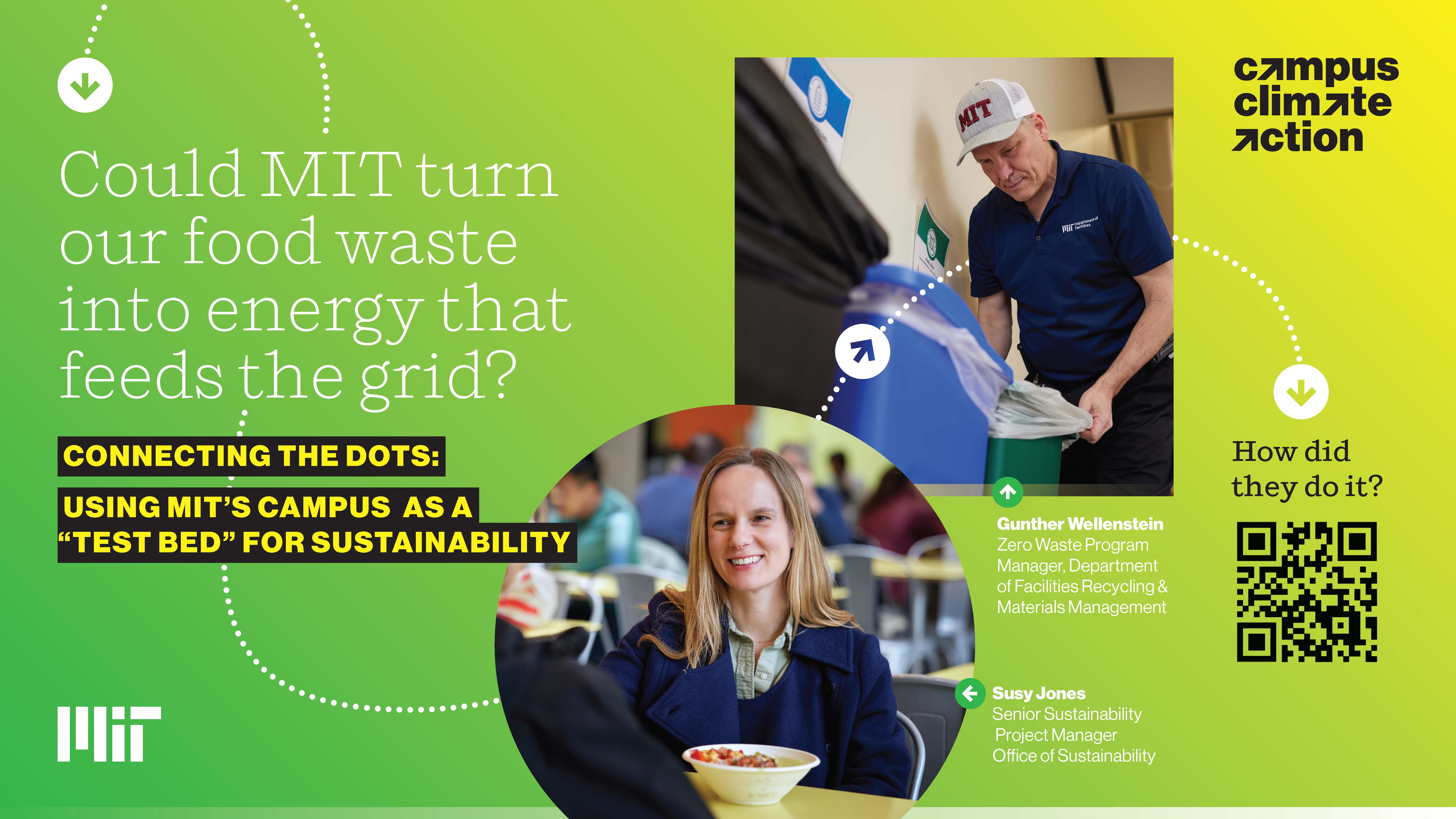With over 11,000 undergraduate and graduate students studying and researching at MIT—many of whom live in residences here—and over 17,000 faculty and staff in full-time and hybrid positions, it’s safe to say there are a lot of people who might enjoy a meal or three on the MIT campus on any given day.
Whether they’re grabbing favorites from one of our many dining spots or bringing in their own food from somewhere else, all MIT campus eaters have one thing in common: they’re putting their food waste into our system.
In fact, up to 40 percent of MIT’s trash each year is made up of food waste that ends up in landfills—and ultimately, that waste accounts for 30-40 percent of our production of greenhouse gases each year.
Clearly, this is a problem in need of a distinctly MIT-caliber solution—but that solution would ultimately require a change on multiple levels: both in how we as a community immediately deal with the waste we produce, and how we approach the processing of waste as an institution.
As Brian Goldberg, assistant director r of the Office of Sustainability, says, “We want to find ways for our campus community to contribute to our climate action goals at every level. That means the work we do to mitigate the waste we produce as an institution, through to our impact as departments, right down to our behaviors and choices as individuals.”
The research-driven response
MIT has committed to the goal of reducing campus trash by 30 percent by 2030. That’s no small number, but by applying all the skills MIT is known for to the challenge—rigorous research, data-driven innovation, and pioneering design thinking—the Institute is working to tackle our waste problems through a series of coordinated actions.
Goldberg calls MIT’s response a cross-campus effort to “design out waste.”
A series of waste audits were conducted in partnership with the Department of Facilities and departments, labs, and centers across campus to take a look at our waste disposal practices and the impact of waste stream contamination on our recycling efforts. An eye-opening project with the MIT Media Lab even took a creative approach to gathering actionable ways to reduce waste.
Goldberg and Marty O’Brien, assistant director for Campus Services, outlined strategies to reduce overall campus waste. Their response to food waste in particular was inspired in part by the research of Associate Professor of Civil and Environmental Engineering Desiree Plata.
Plata’s research focuses on ways to trap methane gas—including methane gas produced by cows at dairy farms and yes, by the food waste the MIT—and transform it into energy that can be used to power the regional grid. Desiree’s team at the Plata Lab at MIT is continuing to work toward a world in which the “engineered solutions of the future will incorporate environmental objectives.”
Bins have now been placed across the MIT campus to separate out food waste, which can then be reprocessed into fertilizer, compost, and energy—without the off-product of greenhouse gases caused by transporting the waste and putting it into landfills.
The entire MIT community is welcomed to monitor the Institute’s progress towards their waste impact goals in the , Sustainability DataPool which includes the Material Matters, and Campus Water Use dashboards, which you can find here.
To learn more about MIT’s Fast Forward commitments, start here. To learn about MIT’s Campus Climate Action-specific efforts, head here.



